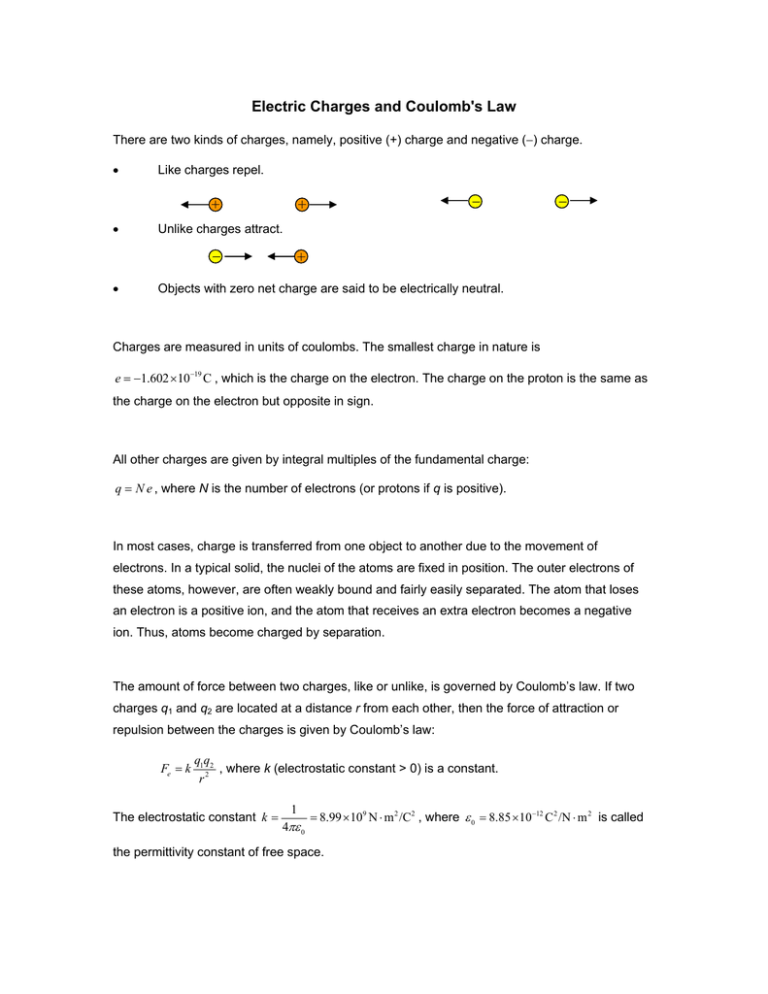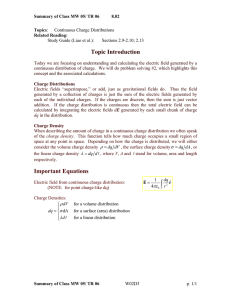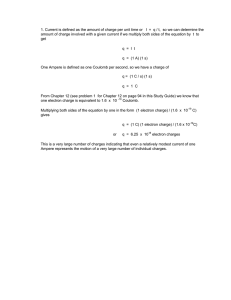Electric Charges and Coulomb`s Law
advertisement

Electric Charges and Coulomb's Law There are two kinds of charges, namely, positive (+) charge and negative (−) charge. • Like charges repel. + • − − Unlike charges attract. − • + + Objects with zero net charge are said to be electrically neutral. Charges are measured in units of coulombs. The smallest charge in nature is e = −1.602 ×10−19 C , which is the charge on the electron. The charge on the proton is the same as the charge on the electron but opposite in sign. All other charges are given by integral multiples of the fundamental charge: q = N e , where N is the number of electrons (or protons if q is positive). In most cases, charge is transferred from one object to another due to the movement of electrons. In a typical solid, the nuclei of the atoms are fixed in position. The outer electrons of these atoms, however, are often weakly bound and fairly easily separated. The atom that loses an electron is a positive ion, and the atom that receives an extra electron becomes a negative ion. Thus, atoms become charged by separation. The amount of force between two charges, like or unlike, is governed by Coulomb’s law. If two charges q1 and q2 are located at a distance r from each other, then the force of attraction or repulsion between the charges is given by Coulomb’s law: Fe = k q1q2 , where k (electrostatic constant > 0) is a constant. r2 The electrostatic constant k = 1 = 8.99 × 109 N ⋅ m 2 /C2 , where ε 0 = 8.85 × 10 −12 C 2 /N ⋅ m 2 is called 4πε 0 the permittivity constant of free space. Objects are considered as point particle or point charge, if d1 , d 2 << r . r + − d1 d2 The electrostatic forces from several charges superimpose vectorially. This means that the force on a charge “p” located at position rp due to n charges (numbered 1, 2, 3,, …n) located at positions r1, r2, … rn is given by n G qq Fp = ∑ k G i pG rˆip rp − ri i =1 For example, suppose that we have four charges, q0, q1, q2, and q3. q2 K F2 q1 K F1 q3 K F3 q0 The force exerted on charge 0 by charge 1 is F01 = 1 q0 q1 4πε 0 r012 where r01 is the distance between the charges. Similarly, the force exerted on charge 0 by charge 2 is F02 = q0 q2 4πε 0 r02 2 1 The total force acting on charge q0 due to Coulomb’s forces F1, F2 and F3 is G G G G F = F1 + F2 + F3 (Principle of superposition) The direction of forces shown in the figure above, represent the situation where the charge q0 is of opposite charge to q1, q2 and q3. Shell Theorems for Electrostatics Theorem 1: A uniform spherical shell of charge behaves, for external points, as if all its charge were concentrated at its center. Theorem 2: A uniform spherical shell of charge exerts no force on a charged particle placed G inside the shell. F = 0





